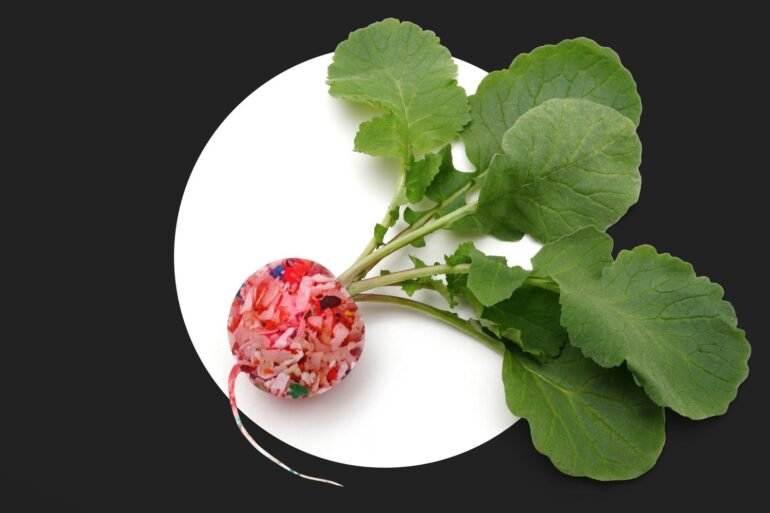:max_bytes(150000):strip_icc():format(jpeg)/Microplastics-Inside-Vegetables-FT-DGTL1025-e015b4bf74544ba4b590ba203f602a77.jpg)
- A new study from the University of Plymouth reveals that nanoplastics can circumvent plants’ natural root barriers and accumulate in edible vegetables, such as radishes.
- Researchers found that nearly 5% of nanoplastics entered the plants, with a quarter of those particles ending up in the parts we eat.
- This adds to growing evidence that microplastics are not only widespread in seafood and water but are also contaminating crops, raising concerns for human health and the food supply.
Microplastics, tiny plastic fragments measuring five millimeters or less, are now nearly everywhere. They’re found in the world’s waters, in the air, and have even been detected in the human brain. Most of the time, humans come into contact with them when they shed from items such as nonstick pans, cutting boards, sponges, or plastic bottles. However, according to a new study, they may also be contaminating our vegetable supply.
Researchers from the University of Plymouth published their study results in the journal Environmental Research, demonstrating how micro- and nanoplastics have accumulated in crops. To understand how this happens, the team used radishes and exposed them to nanoplastics for five days in hydroponic growing conditions, with their “non-fleshy roots in contact” with the plastics. They then measured the buildup of microplastics in the edible roots and shoots when the experiment concluded.
At the end of the experiment, the team found that nearly 5% of nanoplastic particles had entered the plant through its roots, meaning millions of nanoplastics had reached the roots, and a quarter of those had made their way into the edible part that is consumed.
“Plants have a layer within their roots called the Casparian strip, which should act as a form of filter against particles, many of which can be harmful,” Dr. Nathaniel Clark, the study’s lead author, shared in a statement with Earth.com. “This is the first time a study has demonstrated nanoplastic particles could get beyond that barrier, with the potential for them to accumulate within plants and be passed on to anything that consumes them.”
Clark added that it’s very likely these findings will also apply to other vegetables beyond radishes. His colleague, Professor Richard Thompson, who was the study’s lead author, pointed out that this shouldn’t be surprising, adding, “after all, in all our previous work we have found microplastic pollution everywhere we have looked for it.” However, Thompson added that this study provides “clear evidence that particles in the environment can accumulate not only in seafood but also in vegetables.” It also underscores the vulnerability of our food supply, as microplastics travel through waterways and eventually reach crops consumed by humans and livestock.
While the study of microplastics and their effects on humans is relatively new, a growing body of evidence indicates they are likely to be harmful to our health. Food & Wine reported on another study earlier this month, which showed that microplastics can accumulate in the arterial plaque of patients with cardiovascular disease. The researchers noted in their report that these micro- and nanoplastics can trigger “toxicologic effects” when they enter the human body through “ingestion, inhalation, and skin exposure.” They added that the microscopic particles pose a risk factor for various conditions, including “altered heart rate, cardiac-function impairment, myocardial fibrosis, and endothelial dysfunction,” as well as general oxidative stress and inflammation in the body.
However, there are ways to reduce your risk, such as using certain water filters and replacing plastic cutting boards with wooden ones, as well as eating the right vegetables, which, like the Casparian strip, can help your body fight off microplastics.
Stacey Leasca
2025-10-02 10:01:00

